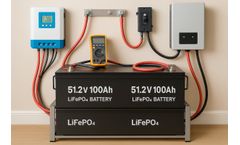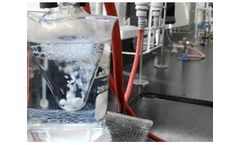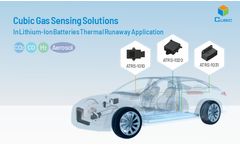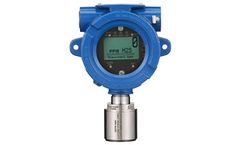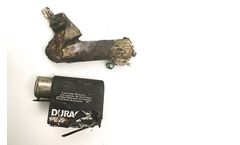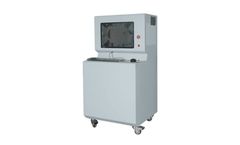Refine by
Thermal Runaway Articles & Analysis
23 articles found
Example (practical): if a fixture needs 200 Wh per night, an LFP battery with at least 250 Wh usable capacity (≈312 Wh nominal at 80% DoD) is a conservative starting point — then increase for autonomy days and temperature derating. Safety, thermal behavior and BMS: real-world reliability LiFePO₄ is inherently more thermally stable than many other ...
Cleaner, Cooler, Safer Lithium Lithium-ion batteries produce no off-gassing during charging and operate at more stable temperatures. Key safety features include: Thermal Cutoffs: BMS instantly isolates cells if temperatures exceed safe thresholds. Cell Balancing: Prevents overcharge or deep-discharge stress that can lead to thermal runaway. ...
Therefore, deploying process & quality monitoring for electrolytes leakage and thermal runaway will effectively reduce the risk of accidents, ensuring the safety of personnel and the environment, while improving the yield of production lines to meet increasingly stringent safety regulations.Cubic, leveraging its comprehensive gas sensor technology platform, ...
During thermal runaway, the battery releases multiple gases, including carbon dioxide (CO2), hydrogen (H2) and carbon monoxide (CO), which could serve as indicators of thermal runaway for early warning. Among the gases emitted during thermal runaway, carbon dioxide (CO2) has emerged as the most ...
Enhanced Safety The intrinsically stable iron phosphate chemistry resists thermal runaway, minimizing fire risk even under abuse. Flat Discharge Curve A near-constant voltage profile maximizes usable capacity and allows inverters and charge controllers to operate more efficiently. ...
Lithium-Iron-Phosphate (LiFePO₄): Higher upfront cost, higher usable capacity (80–90% DoD), longer cycle life (3,000–5,000 cycles), lighter, maintenance-free, more compact, and stable chemistry (less thermal runaway risk). Given the requirement for safe, reliable backup, LiFePO₄ is the preferred choice for residential applications. ...
In the chemical industry, precise temperature control is crucial to ensuring efficient, safe, and cost-effective operations. Chemical processes often require heat to be transferred between substances in ways that prevent thermal damage, promote chemical reactions, and maintain safety standards. Shell and tube heat exchangers (STHEs) are widely used in these applications, offering efficient heat ...
Thermal runaway events not only pose a significant threat to passenger safety but also result in substantial property damage. ...
Considering the safety risks of thermal runaway events in energy storage stations, Cubic, a leading manufacturer of gas sensors and analyzers, has developed thermal runaway monitoring sensors based on its core gas sensor technology to provide real-time monitoring of gases (CO2/CO/HC/H2), electrolyte vapor (DMC/EMC/EC), pressure, ...
The process commences with the feeding mechanism, where plastic feedstock enters the reactor chamber, ready to undergo the thermal onslaught. Pyrolysis reactors come in various configurations, each tailored to suit specific operational needs and plastic waste compositions. ...
Understanding this reaction is a key step toward better battery safety. Thermal runaway in lithium-ion batteries Batteries are designed to store chemical energy, and during thermal runaway, this chemical energy is uncontrollably released. ...
Recent years, lithium-ion batteries thermal runaway events have attracted widespread attention. To further reduce the loss of life and property caused by lithium-ion batteries thermal runaway, some important regulations have been promulgated. ...
Photo credit iStock.com/Black_Kira Analyzing gas emissions during direct thermal runaway in LIBs Thermal runaway (TR) is a chain reaction of different chemical reactions in a LIB. ...
Described simply, thermal runaway is an exothermic reaction in which li-ion battery cell temperatures rise rapidly in an uncontrollable self-exacerbating fashion. ...
Electric vehicle recalls have accelerated as the risk of battery thermal runaway due to faults and failures remains a major pain point in the eMobility industry. ...
A charge voltage higher than float may cause excessive gassing and lead to dry-out or thermal runaway. Temperature: Change to the following: Maintain optimum performance by operating the battery at the North American recommended nominal 77° (25°F) temperature, and above or below this temperature norm, compensate the charge voltage appropriately to ...
In technical terms this is referred to as ‘thermal runaway’, an innocuous way of saying that the temperature of the battery rises uncontrollably and bursts into flames. ...
Under certain circumstances this leads to an unstoppable chain reaction: the thermal runaway. The temperature spikes cause neighbouring cells in the battery to overheat and within milliseconds, to release their stored energy. ...
To explain “golden time” further, it’s the period of time during battery abuse between the off-gas event and thermal runaway, which includes smoke and flame generation. The goal of initiating any one of the recommended mitigating actions below is to extend the “golden time”. ...
~ 80 ?, so the problem of thermal runaway must be paid great attention to.Thermal runaway is quite dangerous for batteries. When the battery suffers severe thermal runaway, it may cause the battery to explode or burn. It is worth noting that thermal runaway occurs on batteries ...




